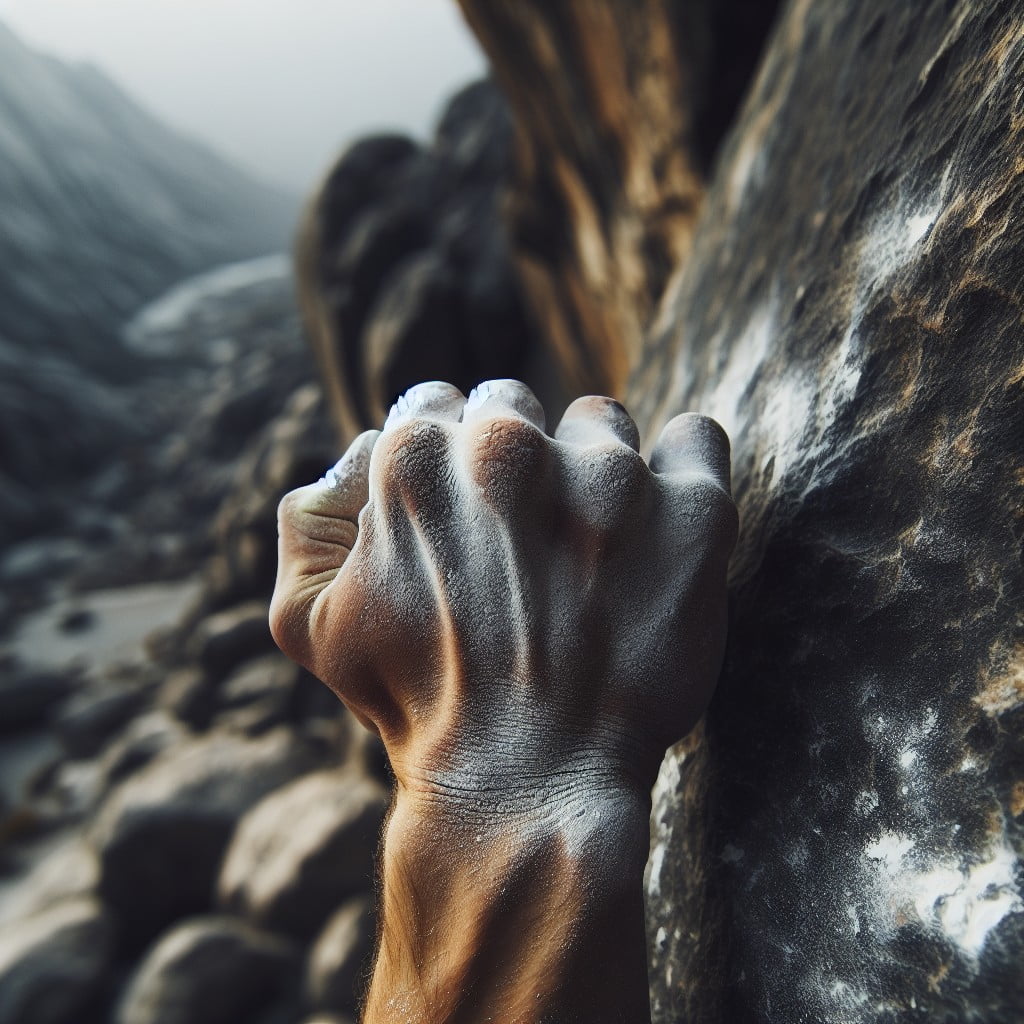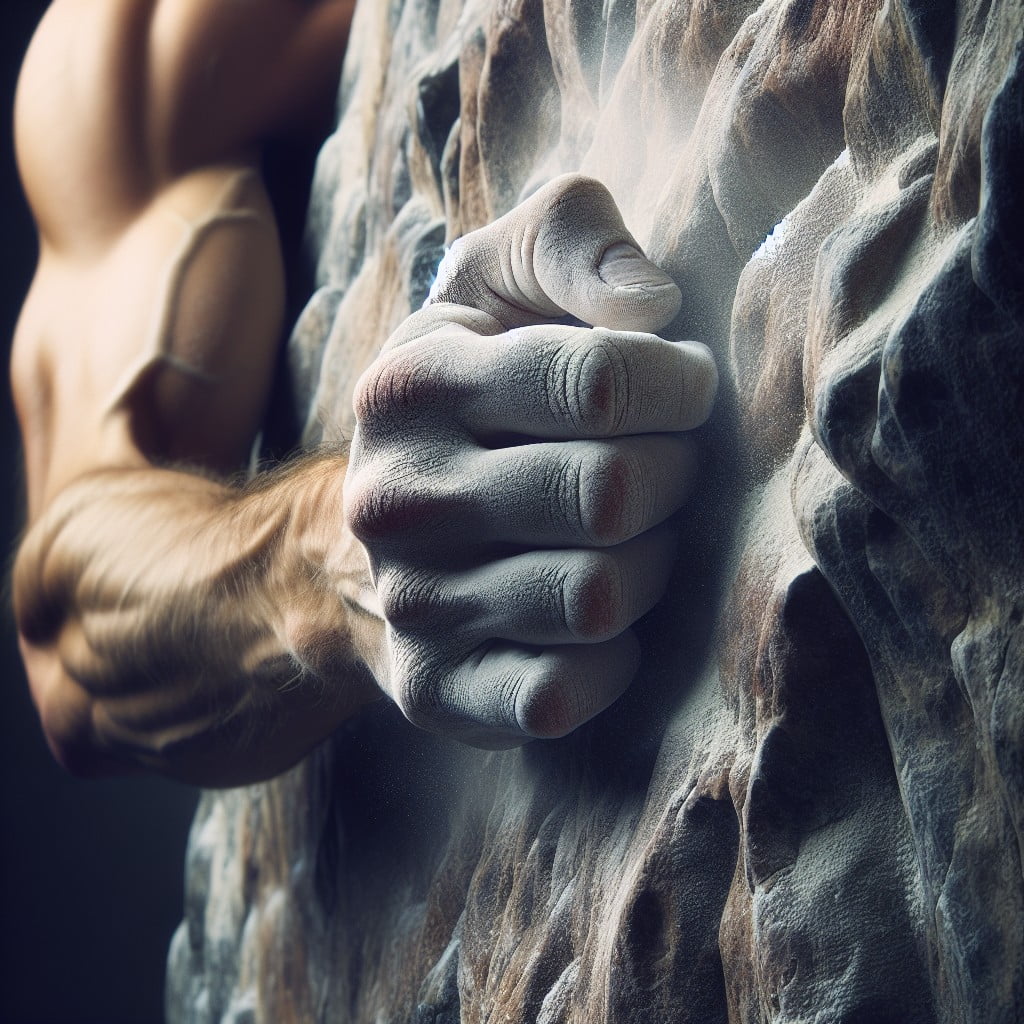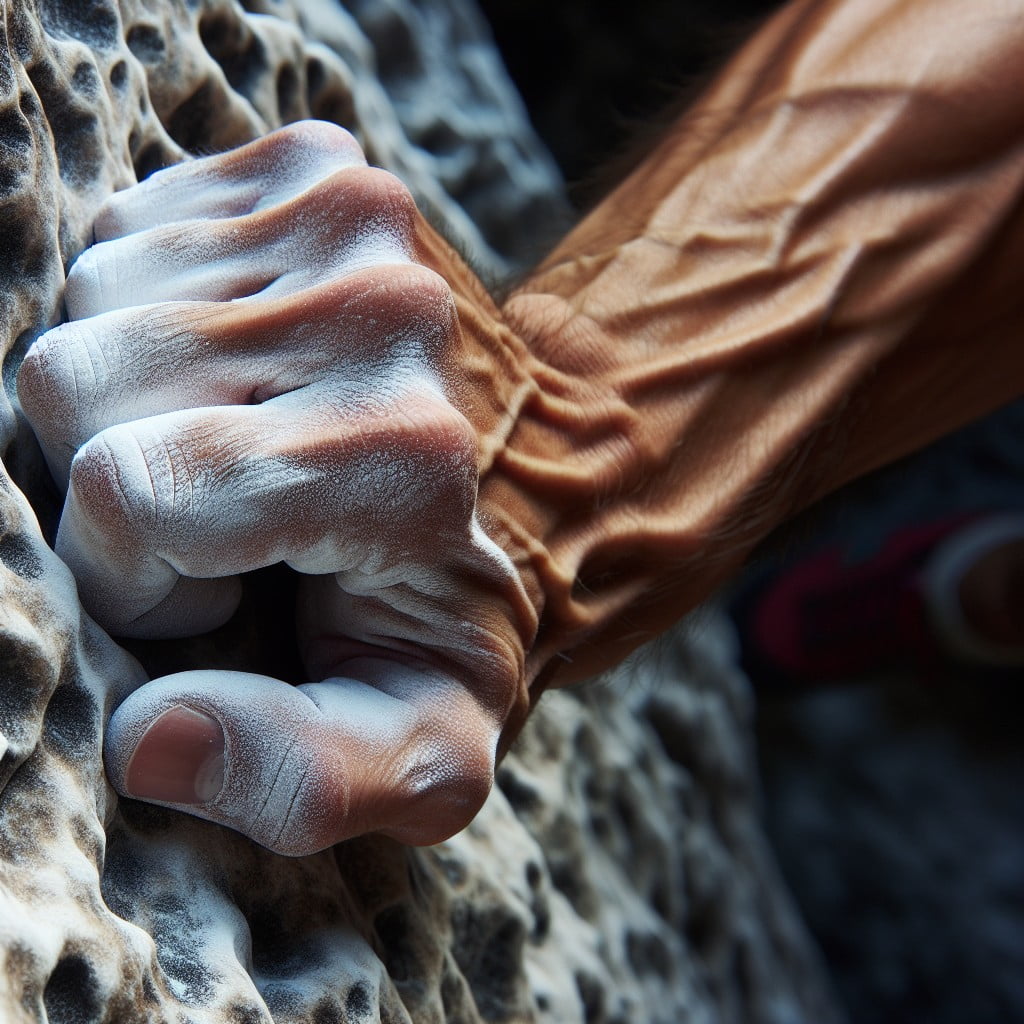Last updated on
Dive into the world of rock climbing and bouldering with Mammut chalk, a high-performance product that ensures a strong grip even in the most challenging conditions.
Key takeaways:
- Mammut Chalk Powder maximizes grip through moisture absorption
- Mammut chalk offers versatile performance for both novice and expert climbers
- Fine texture ensures thorough coat and improved friction
- Resealable bag design prevents spillage and maintains chalk quality
- Liquid chalk provides a thin, even layer for better grip
Mammut Chalk Powder

Mammut Chalk Powder offers climbers a blend that maximizes grip through moisture absorption, enabling a secure hold even on the slickest holds.
Balancing consistency and purity, the powder reduces the need for frequent reapplications, allowing for prolonged climbs without interruption.
Its fine texture ensures a thorough coat on the hands, contributing to improved friction between the skin and the climbing surface.
Designed for a wide range of conditions, from indoor gyms to outdoor rock faces, the versatility of this chalk accommodates the needs of both novice and expert climbers alike.
Features

Understanding the unique attributes of Mammut chalk begins with its fine consistency, crafted to ensure maximum surface area coverage. This texture contributes to a secure grip by effectively absorbing moisture from climbers’ hands, a critical feature for both indoor and outdoor climbing success.
Impressively, the Mammut blend includes drying agents that enhance grip longevity, offering climbers confidence during prolonged endeavors. For those seeking mess-free applications, the chunkier variants allow for adjustable texture, as climbers can crush the chunks to their preferred fineness.
Sustainability is another core aspect, with environmentally friendly packaging reducing the ecological footprint. This aligns with the growing eco-consciousness in the outdoor sports community.
Additionally, the Mammut chalk range offers a convenient resealable bag design. This practical feature prevents spillage and ensures that climbers can maintain the quality of their chalk between climbs. It’s these thoughtful design elements that embody the Mammut brand’s commitment to climbers’ needs.
Friction & Overall Feel

The tactile experience of Mammut chalk is characterized by its fine consistency, which adheres well to the skin, enhancing grip reliability. When climbers coat their hands, the chalk creates a smooth, uniform layer, minimizing the instances of excess application that could affect hand-to-rock contact.
Unlike chunkier chalk, the fine grains distribute evenly, preventing the buildup of clumps that can create slippery spots on holds. The result is a secure feeling that boosts confidence through improved friction, especially crucial on challenging routes where hand placement and a firm grip can make all the difference.
Users often remark on the chalk’s ability to absorb sweat effectively, maintaining dryness over multiple climbs and reducing the need for frequent reapplications. This consistent dry feel ensures a dependable grip for climbers tackling diverse wall conditions.
Coverage

When considering how well Mammut chalk coats the hands, it’s important to note that it provides a uniform layer of coverage with minimal effort. This consistency is owed to the fine texture of the powder, which sticks effectively to both skin and the surface of rock or plastic holds. The even spread ensures that all areas prone to sweating are adequately covered, reducing the frequency of reapplication needed during climbs. This feature is not only efficient but also economical as it helps in conserving the quantity of chalk used per session. Additionally, the effectiveness in coverage contributes to the confidence and security climbers feel regarding their grip, which can be pivotal for both performance and safety on the wall.
Value
When assessing the value of Mammut’s chalk, consider both price and performance. High-quality chalk may come at a premium but results in less use per session, balancing the initial cost over time. Also, pure chalk like Mammut’s, which lacks additives, can be beneficial for climbers with sensitive skin, potentially reducing long-term costs associated with skincare.
Additionally, the longevity of the product’s effectiveness during a climb, reducing the need for frequent reapplication, further underscores its value proposition. It’s worth comparing the cost per ounce to other offerings on the market, as prices can vary significantly. Keep in mind that investing in a larger volume can lead to savings, as bulk purchases typically reduce the price per unit.
Liquid Chalk for Better Grip
Liquid variants offer an alternative to traditional powdered chalk, with a consistency that allows for a thin, even layer across the hands. This liquid form typically combines chalk with alcohol that evaporates upon application, leaving a long-lasting coating that maximizes grip.
Ideal for indoor climbing or humid conditions, liquid chalk reduces airborne particles, making it a more lung-friendly and cleaner option for both climbers and facilities. Its application prior to a session can also act as a base layer, enhancing the effectiveness of powdered chalk reapplied during longer climbs.
As such, liquid options can lead to enhanced performance on the rock or wall by ensuring a consistent, secure grip throughout your climb.
Compare to Similar Products
When evaluating Mammut’s chalk against its competitors, consider these key points:
1. Grip Enhancement: Assess how well Mammut’s chalk improves grip compared to other brands, noting if it offers superior, equivalent, or lesser performance.
2. Longevity: Observe how long the chalk stays on your hands during a climbing session relative to other products, which might influence reapplication frequency.
3. Texture: Pay attention to the chalk’s fineness and how it feels between your fingers, as personal preference can vary and some climbers favor a chunkier texture for a more tactile sensation.
4. Dustiness: Consider the amount of airborne particles generated by Mammut’s chalk. This aspect is particularly important in indoor climbing gyms where ventilation and air quality are considerations.
5. Packaging: Look at how Mammut packages its chalk – the convenience of resealable bags, eco-friendly options, or the inclusion of a chalk ball might set it apart from others.
6. Price: While not always an indicator of quality, compare the cost of Mammut’s chalk to that of rival products to determine whether it offers a competitive price for the value it provides.
Remember to consider your unique preferences and the specific demands of your climbing style when making comparisons, as what works best for one climber might not for another.
Our Analysis and Test Results
Through rigorous testing in a variety of climbing settings, we’ve examined how Mammut Chalk stands up against its claims and competitors. We tested its longevity by noting chalk-up frequency during long bouldering sessions and sport climbs. The chalk’s performance under different humidity conditions was also scrutinized to assess its moisture absorption effectiveness.
Additionally, we looked into how well the product transfers to rock surfaces from different angles and hold types, focusing on the amount of chalk left on holds which is often a concern for both gyms and outdoor ethics. We observed the chalk’s texture, determining its impact on skin health and the potential for drying out or causing cracks during extended climbing periods.
To ensure a comprehensive analysis, we included feedback from climbers of various skill levels, encompassing both casual indoor climbers and seasoned outdoor enthusiasts. Their insights contributed to understanding the product’s versatility and user satisfaction. This hands-on feedback combined with controlled testing forms the foundation of the insights that we will delve into within the article.
Performance Comparison
When evaluating the performance of Mammut Chalk against other brands, key factors include grip enhancement, moisture absorption, and residue. Mammut’s formula is crafted to optimize dryness, offering climbers a reliable hold even in high perspiration scenarios. Compared to competitors, it tends to leave less white residue on rock surfaces and gear, a consideration for those mindful of environmental impact.
Additionally, the fineness of the chalk particles ensures thorough hand coverage with less product, making Mammut an efficient choice for prolonged climbing sessions. Durability under usage is also noteworthy, as it maintains its texture without breaking down into a powdery dust, which can be indicative of quality and influences reapplication frequency.
Best Climbing Chalk of 2024
Selecting the finest climbing chalk can enhance your performance on the rock by ensuring a reliable grip. As we look at the top contenders of 2024, moisture absorption, texture, and staying power surface as key factors behind their effectiveness.
High-quality chalk typically exhibits superior moisture absorption, efficiently handling sweat and keeping hands dry. Texture, ranging from fine to chunky, caters to personal preference but can also affect how the chalk coats the skin. Some climbers favor a finer texture for even coverage, while others prefer a chunkier feel for a more tactile experience.
Staying power is crucial, as chalk that adheres longer to your hands reduces the frequency of re-chalking, which can be a significant advantage, especially during lengthy climbs or in competition settings. The best chalk products on the market balance these elements to deliver an enduring, non-slip surface even under the most challenging conditions. As new formulations and brands emerge, it’s vital to keep these qualities in mind to ensure that your selection not only meets industry standards but also complements your climbing style and needs.
How to Choose Climbing Chalk
Selecting the right climbing chalk boils down to personal preference and specific climbing needs. Here are key considerations to guide you:
1. Type of Chalk: Decide between block, loose, or liquid chalk. Block chalk can be crushed to your desired consistency, loose chalk is ready-to-use, and liquid chalk provides a base layer and often contains alcohol to sanitize hands.
2. Texture: Some chalks are finer and others are chunkier. Finer chalk can provide a more even coating whereas chunkier chalk may last longer during climbs.
3. Drying Agents: If you have sweaty hands, look for chalk that includes drying agents like magnesium carbonate to improve grip.
4. Packaging: Consider if you want a resealable bag, a chalk ball for less mess, or a container that is easy to transport and use at the climbing gym or crag.
5. Purity: Higher purity levels usually equate to better performance but at a higher cost. Determine if this is a priority for you.
6. Environmental Impact: Eco-conscious climbers might prefer chalk with low environmental impact. Check for brands that offer biodegradable packaging or natural ingredients.
Remember to test different options to find what best complements your climbing style and keeps you secure on the wall.
Recap:




